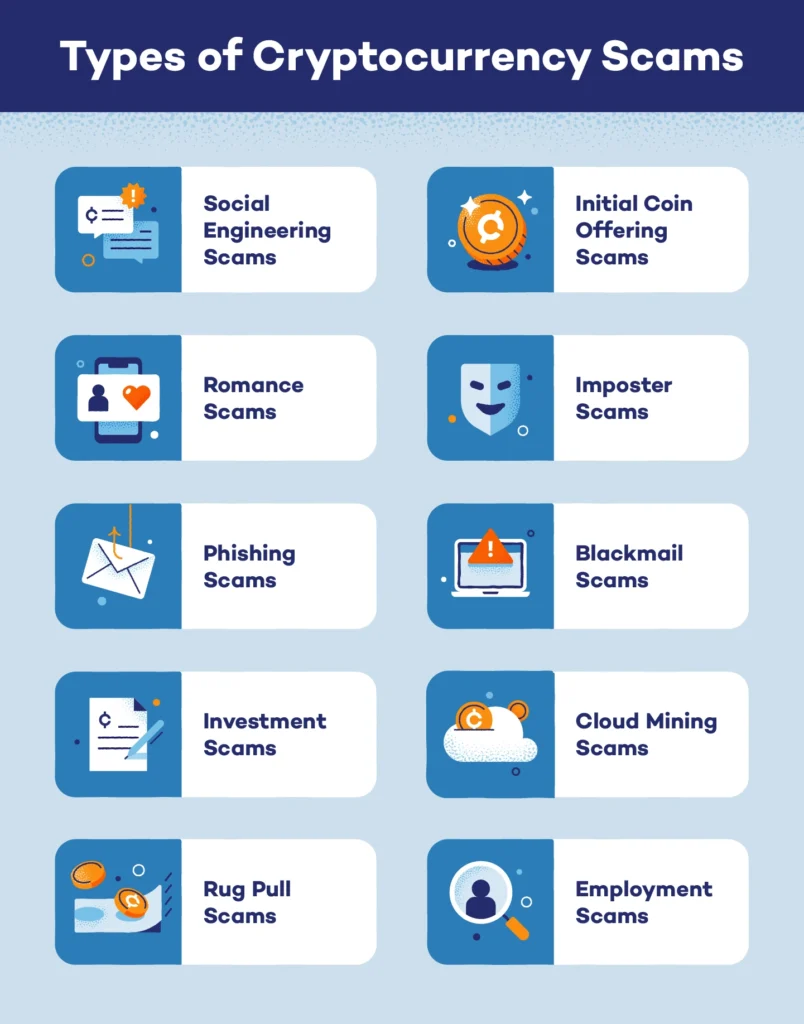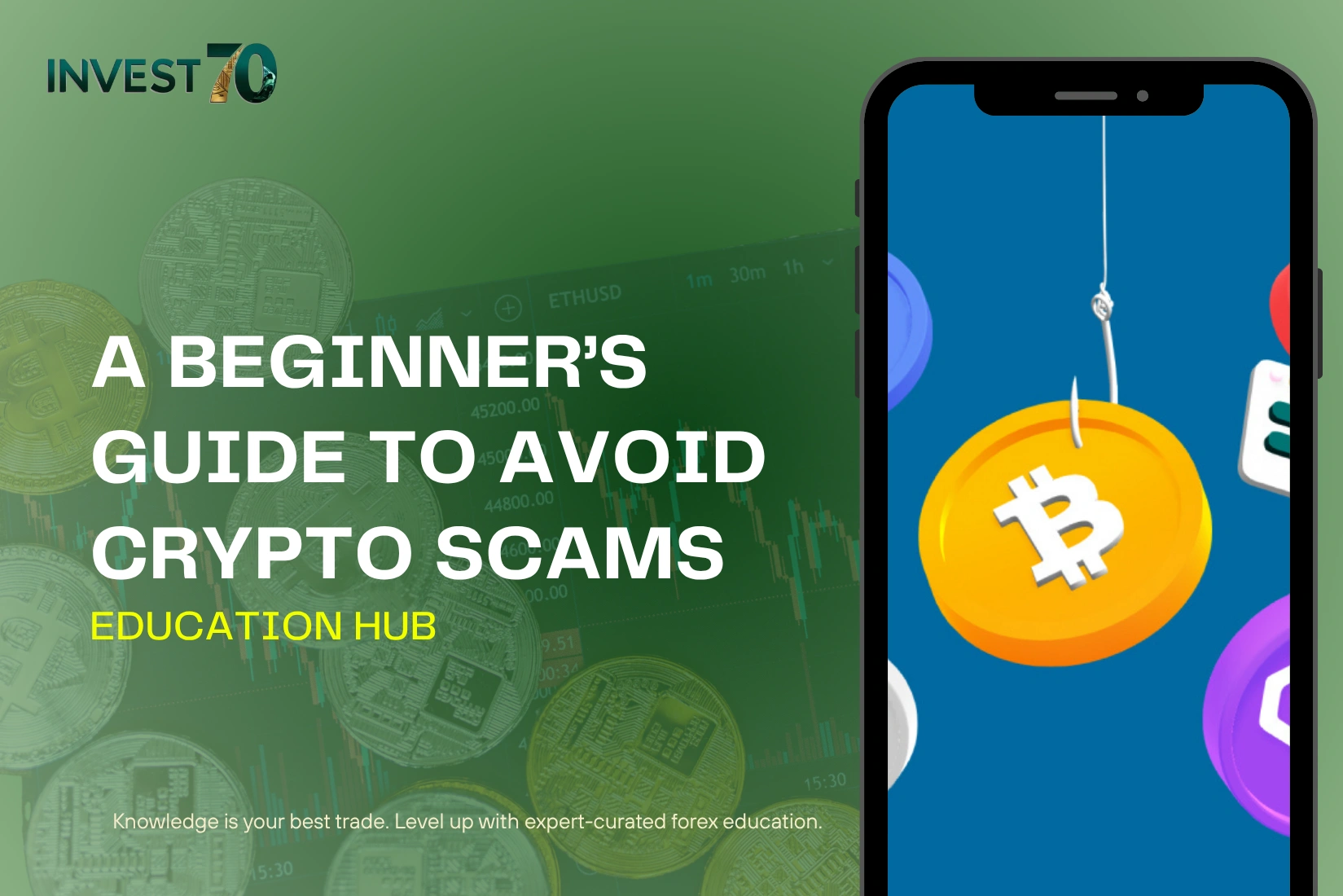Crypto Scams to Avoid: A Beginner’s Guide to Safer Investing in 2025
Getting involved in cryptocurrency opens up new possibilities for financial freedom—but it also brings new types of risk. For beginners, knowing the crypto scams to avoid in 2025 is one of the most important steps to navigating this space responsibly.
From fake wallet apps to elaborate Ponzi schemes, scammers are constantly finding new ways to exploit inexperience and online behavior. This guide offers a practical breakdown of today’s most common threats, why they work, and what you can do to stay safe.
Why Are Crypto Scams Still So Common in 2025?
While cryptocurrency adoption continues to grow, security awareness often lags behind. Blockchain technology itself is very secure—but the same cannot be said for the platforms, communities, and tools that surround it. Scammers exploit the trust gap, where new users rely on unfamiliar tools and social channels without knowing how to verify their safety.
Some platforms operate in a regulatory gray area. Many users assume a project must be safe if it’s listed on an exchange or mentioned by influencers. Unfortunately, that assumption can lead to disaster.
Types of Cryptocurrency Scams You Should Know

Credit from Panda Security
Rather than listing them all at once, let’s look at how these scams operate and evolve over time.
1. Phishing Attacks
Phishing scams mimic trusted services. You might receive an email or message pretending to be from your crypto wallet or exchange. Clicking the link takes you to a lookalike website where your credentials are stolen. Some phishing emails even include malicious QR codes or fake 2FA prompts.
2. Fake Wallet Apps
In 2024, multiple counterfeit wallet apps were removed from both Android and iOS stores after stealing user seed phrases. These apps had names, logos, and designs nearly identical to the real ones.
3. Investment Schemes and Ponzi Projects
These scams promise daily or weekly returns—sometimes as high as 10–20%—and often encourage users to “refer friends.” The returns are usually paid with money from newer investors. Once interest declines or funds dry up, the project shuts down.
4. Rug Pulls and DeFi Exploits
In decentralized finance (DeFi), a rug pull happens when developers create a token or liquidity pool, then suddenly withdraw all the funds, leaving users with worthless tokens. Flash loan attacks and smart contract exploits have also led to millions in lost assets.
5. Giveaway and Impersonation Scams
A common scam on platforms like Twitter and YouTube involves fake giveaways. Scammers pose as Elon Musk, Vitalik Buterin, or crypto firms, offering to double your crypto if you send some first. In 2023, one YouTube livestream using a deepfake of Charles Hoskinson scammed over $500,000 in Bitcoin from viewers.
Real Examples: Table of Recent Crypto Scam Cases
Here’s a look at real data involving notable scam incidents from the past two years:
| Scam Type | Project/Case | Amount Lost | Year | Details |
|---|---|---|---|---|
| Rug Pull | Fintoch | $30 million+ | 2023 | Fake partnership with Morgan Stanley; project vanished overnight |
| Fake Wallet App | MetaMask Clone (Android) | $1.5 million+ | 2024 | Listed on Google Play, stole private keys |
| Phishing Campaign | Ledger Live Spoof | $600,000 | 2024 | Used fake Chrome extension to steal recovery phrases |
| Ponzi Scheme | HyperVerse | $1.3 billion+ (alleged) | 2022–2023 | Promised daily returns and recruited investors via referral marketing |
| Impersonation Scam | Deepfake Livestreams | $500,000+ | 2023 | AI-generated videos of crypto founders urging viewers to send BTC/ETH |
How Scammers Target Beginners Specifically
If you’re new to crypto, your activity is often easy to detect. Scammers watch forums, Discord channels, Telegram groups, and even Reddit threads where beginners ask questions. Once a user signals they’re setting up a wallet or making their first purchase, they become a target.
Scammers may:
- Pose as helpful “support” agents in comment threads
- Direct message you offering investment opportunities or secret tokens
- Share links to “airdrops” that require wallet connections
In many cases, these messages are scripted, and the same scam is attempted hundreds of times across different communities.
Spotting Fake Crypto Scams, Projects and Red Flags
You don’t need to be a developer to assess a project’s legitimacy. Here’s what to check:
Team Transparency
Do the developers have public profiles on GitHub or LinkedIn? Can you trace their previous work?
Smart Contract Audits
Legit DeFi platforms usually undergo audits from third-party firms. No audit, or an unverifiable one, is a red flag.
Whitepaper and Roadmap
Is the whitepaper vague, full of buzzwords, or copied from another project? A real whitepaper explains use cases, tokenomics, and risks.
Liquidity and Token Distribution
Look at how tokens are distributed. If most tokens are held by insiders or early wallets, the risk of manipulation is high.
How to Avoid Crypto Scams in Real-World Situations
The best protection isn’t a tool—it’s your approach.
- Bookmark all crypto sites you regularly use. Don’t rely on search results for wallets or exchanges, as fake ads often appear at the top.
- Don’t rush to connect your wallet to new dApps. Verify that the project is trusted by checking platforms like CoinGecko, CoinMarketCap, or community-driven reviews.
- Use cold storage for significant assets. Hardware wallets like Ledger and Trezor protect your private keys from online exposure.
- Be skeptical of unsolicited offers. This includes airdrops, giveaways, or customer support chats that message you first.
- Educate yourself regularly. Follow trusted security researchers, audit firms, or alert channels like @CertiKAlert on X (Twitter).
What If You’ve Already Been Scammed?
If you suspect you’ve lost funds to a scam:
- Stop all outgoing transactions immediately.
- Contact your exchange or wallet provider, if relevant. They might help freeze transactions in progress.
- Report the incident to local cybercrime units:
- USA: www.ic3.gov
- UK: actionfraud.police.uk
- Malaysia: CyberSecurity Malaysia
- Use blockchain reporting tools like Chainabuse.com to flag suspicious wallet addresses.
- Share your experience anonymously in forums to warn others.
Recovery is rarely guaranteed, but reporting helps law enforcement track patterns and prevent broader damage.
The Role of Regulation and Education in Prevention

Credit from Elliptic
As of 2025, global efforts to regulate crypto are gaining traction. The European Union’s MiCA regulation, U.S. SEC enforcement, and regional efforts in Asia aim to increase platform accountability. But regulation alone won’t solve user-level scams.
Education remains the strongest defense. Scammers succeed when people don’t recognize the warning signs. Communities, exchanges, and educational platforms all play a role in creating safer digital finance environments.
Final Thoughts: Staying Safe as a Crypto Beginner
Learning which crypto scams to avoid is not a one-time exercise. Scammers adapt, but so can you. With a skeptical mindset, basic technical awareness, and consistent learning, beginners can enjoy the benefits of crypto while minimizing risk.
There will always be another “too good to be true” opportunity. Your job is to recognize that the real value in crypto lies in what you control: your knowledge, your wallet, and your decisions.




